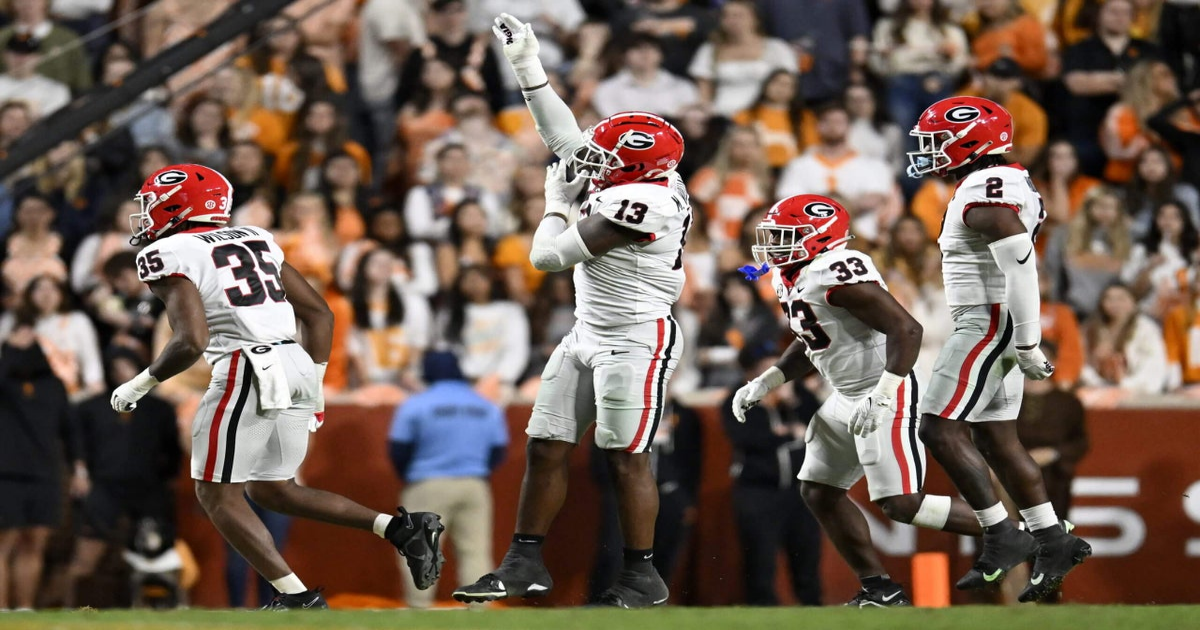The grip held by the SEC and Big Ten on college football has grown more powerful in recent years, and now their collective reign of dominance also extends to the NFL Draft.
Nearly 60 percent of the NFL’s 257 selections in seven rounds belonged to either the SEC (79) or Big Ten (71). It’s not unusual for the leagues to send more players than their contemporaries; the SEC regularly leads that category, with the Big Ten usually finishing second. But the widening talent gap separating these leagues from their contemporaries has become canyonlike.
ConferenceNumber of draftees
The ACC (42) and Big 12 (31) combined barely exceed the Big Ten’s total. Of the 17 programs with at least five selections this weekend, seven compete in the SEC and seven play in the Big Ten. The ACC had two programs with at least five draft picks: Miami (seven) and Virginia Tech (five). Notre Dame had six. No Big 12 program had more than four.
Expansion helped the draft numbers surge for both the SEC and Big Ten. In 2020, the SEC led all conferences with 63 selections, while the Big Ten was second with 48. Those leagues combined for 39 more picks this year than in the 2020 NFL Draft, partly because of recent additions. New SEC member Texas had the third-most picks this year with 12, while Oregon, which joined the Big Ten this year, was fourth with 10 selections.
Total draft numbers for the ACC (plus-15 from 2020) and Big 12 (plus-10) also benefited from expansion. The ACC’s three new members contributed seven more selections while the Big 12 added 13 from six of its eight members. The Big 12 would have finished with 32 selections had Texas and Oklahoma stayed and the eight newcomers remained in other leagues.
With the SEC and Big Ten holding other significant advantages over the other leagues, it appears the only real competition they will get in this area is from one another.
Program picks by conference
SchoolTotal picks
Portal combat
The talent disparity between the power conferences and Group of 5 leagues is also soaring. Not counting the current Pac-12, the G5 totaled 18 draft selections, down from 48 just five years ago. The Sun Belt and Conference USA combined for 18 picks in 2020. This year, they each had one.
The lack of participants from smaller schools became noticeable at the NFL Scouting Combine with only 22 G5 invitees and seven from FCS or other programs. In 2020, 51 players from G5 conferences and 14 players from lower levels attended the combine.
“With the transfer portal, they are going to get more opportunities,” Los Angeles Chargers general manager Joe Hortiz said at the combine. “That’s a great opportunity for them. Now, obviously, it hurts some of the schools they’re transferring out of, but I think that will be a common theme going forward because schools can go out there and acquire players that want to move up and go to a higher level of competition.”
NFL teams and scouts must now account for transfer numbers, which is both helpful and challenging. For smaller-school prospects moving up, evaluators can gauge players against other draft prospects rather than wait for all-star game workouts. But it’s also more difficult to track players moving from team to team.
For instance, 11 of the 13 quarterbacks drafted this weekend transferred at least once in their careers. Of the 28 interior defenders drafted, 10 moved to another school. Of the 25 true running backs selected, nine were transfers. The eight who stayed put played for just three years at their school.
There are plenty of reasons why players transfer, from improving competition to playing time to seeking a larger paycheck. But potential NFL draft prospects always move up a level if they transfer. It never goes in the opposite direction, which directly impacts G5 programs’ draft totals.
Trends
Beyond the total numbers, the SEC and Big Ten dominated the first three rounds, combining for 66 of the 102 selections. The Big 12 (13) and ACC (11) together couldn’t match the Big Ten (29), let alone the SEC (37) in the premium rounds.
For the sixth consecutive season, the national champion also produced the most draft picks. Ohio State led with 14, which tied for the second-most since the NFL went to a seven-round format in 1994. Georgia had 15 players drafted in 2022.
Arizona State, which returns at least 16 starters from its Big 12 championship squad, had just one player selected: running back Cam Skattebo in the fourth round. BYU, which won 11 games last year, didn’t have a single selection. Those numbers should change next year.
The 12 schools from the former Pac-12 combined for 35 selections, up by three from 2020. But with only two schools remaining, the league produced just one pick, Washington State third-round receiver Kyle Williams.
Maryland has the dubious distinction of sending more draft picks to the NFL (six) than football victories last fall (four). The Terrapins tied Notre Dame for the 11th-most drafted players, which was more than seven College Football Playoff qualifiers.
(Photo: Eakin Howard / Getty Images)
